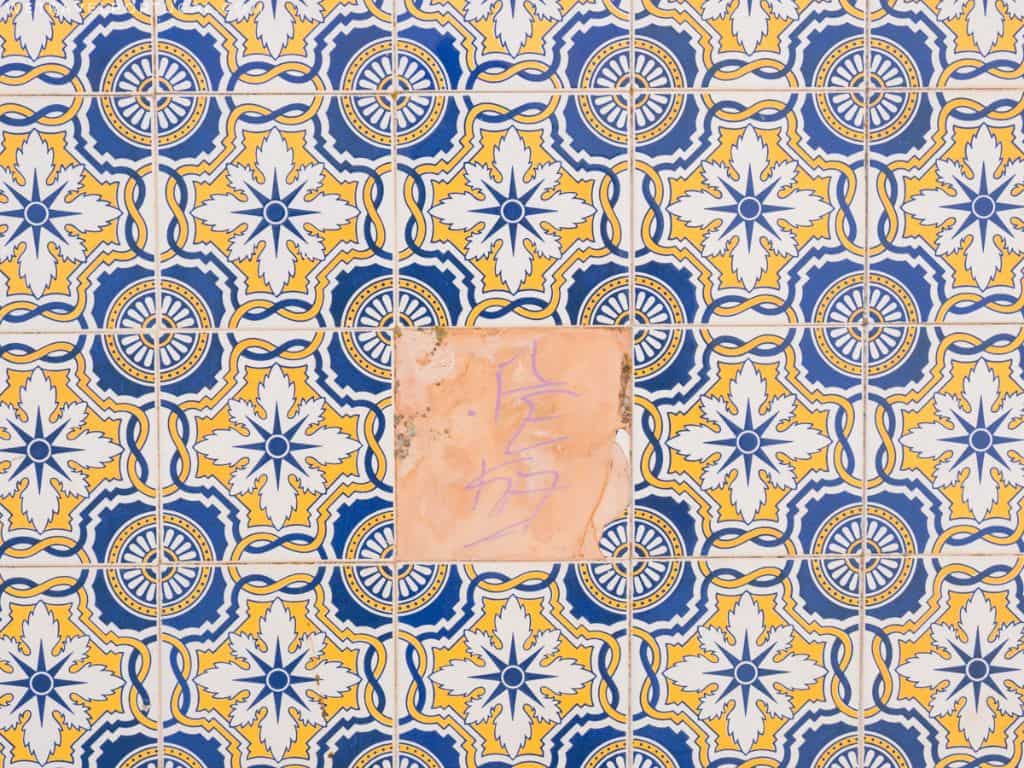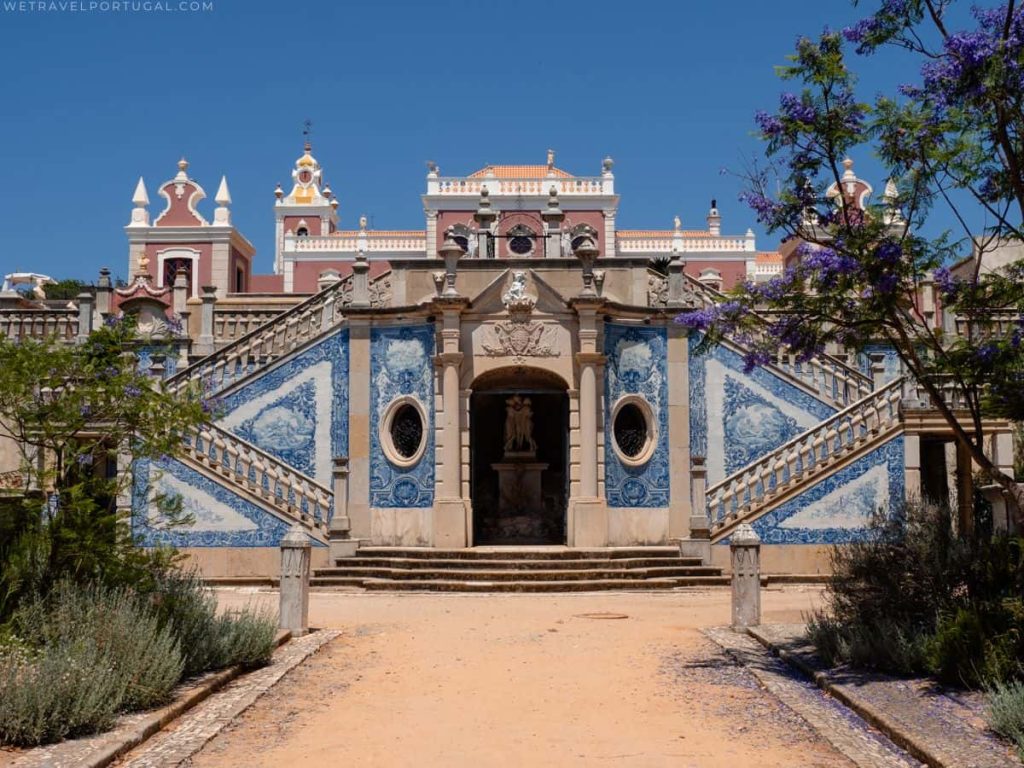The Algarve, Portugal’s southernmost region, is famed for its sun-soaked beaches, dramatic cliffs, and charming villages. Yet beyond its stunning coastline, there is a deeply rooted artistic tradition that decorates its streets, homes, and public buildings – the iconic azulejos.
These intricately painted ceramic tiles are an icon of Portugal’s past, typically blending Moorish influence, Catholic symbolism, and history. Although, these tiles are often more famously associated with Lisbon, and even Porto. There’s lots of fantastic places to find them in the Algarve.
A Brief History of Azulejos in Portugal
The word azulejo derives from the Arabic al-zillīj, meaning “polished stone” or “small polished tile.” The art of tile-making arrived in Portugal during the Moorish occupation in the 8th century. While the Moors used geometric patterns in their designs, the craft evolved into something uniquely Portuguese in the centuries that followed.

In 1498, in a display of wealth, the King of Portugal Manuel I imported tiles from Seville for his residence in the National Palace of Sintra. From this point, cultures really begin to clash. An Italian practice called Maiólica spread through the artisans of the time. This was a technique of painting colours figures over a layer of white enamel in wet clay, instead of simply painting a premade tile.
Blue, green, brown and red azulejo tiles?
The Maiólica technique could create blue, green, brown and red tiles, however blue and white would be quickly adopted as the most popular. This is due to Dutch, and Asian influence. The Dutch were importing valuable Chinese ceramics which typically came in blue and white. These quickly became pvery popular. The Dutch factories pivoted to creating tiles in this colour, that were exported to Portugal. By the 1730’s, Portuguese artisan’s and factories began to respond to the Dutch tiles by recreating similar tiles domestically.
By the 18th century, azulejos had become a key element of Portuguese architecture, with vibrant, hand-painted tiles used to cover everything from church interiors to palaces and public buildings.
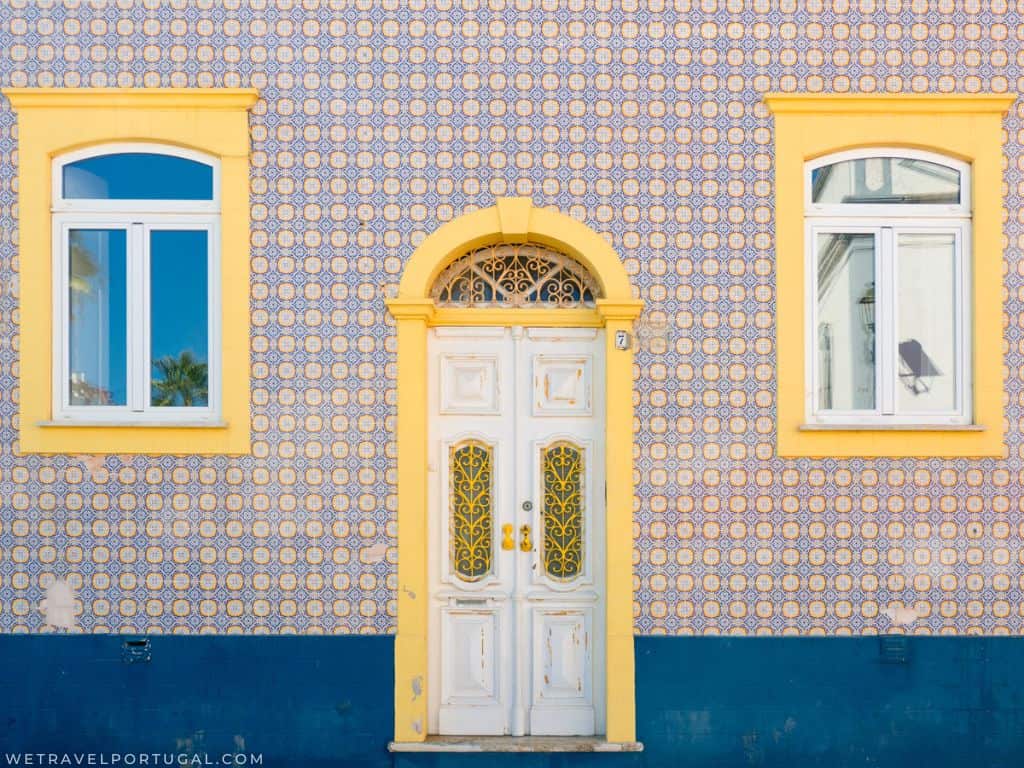
My Favourite Places to Discover Portuguese Tiles in the Algarve
The Algarve has loads of places where you can see almost all types of Azulejos. Here’s my handpicked list of places to see Azulejo tiles across the Algarve.
Igreja de São Lourenço (Church of St. Lawrence) – Almancil
Located in Almancil, near Loulé, the Church of São Lourenço is one of the Algarve’s most stunning examples of Baroque art, and its interior is a dazzling tribute to the azulejo tradition. The church is covered in blue-and-white azulejos depicting scenes from the life of St. Lawrence, the church’s patron saint.
Installed in the 18th century, these tiles were crafted by Lisbon artisans, and they offer a remarkable blend of artistry and storytelling. The intricate panels narrate religious stories with such detail and beauty that this church is often referred to as a “blue wonder” of the Algarve.
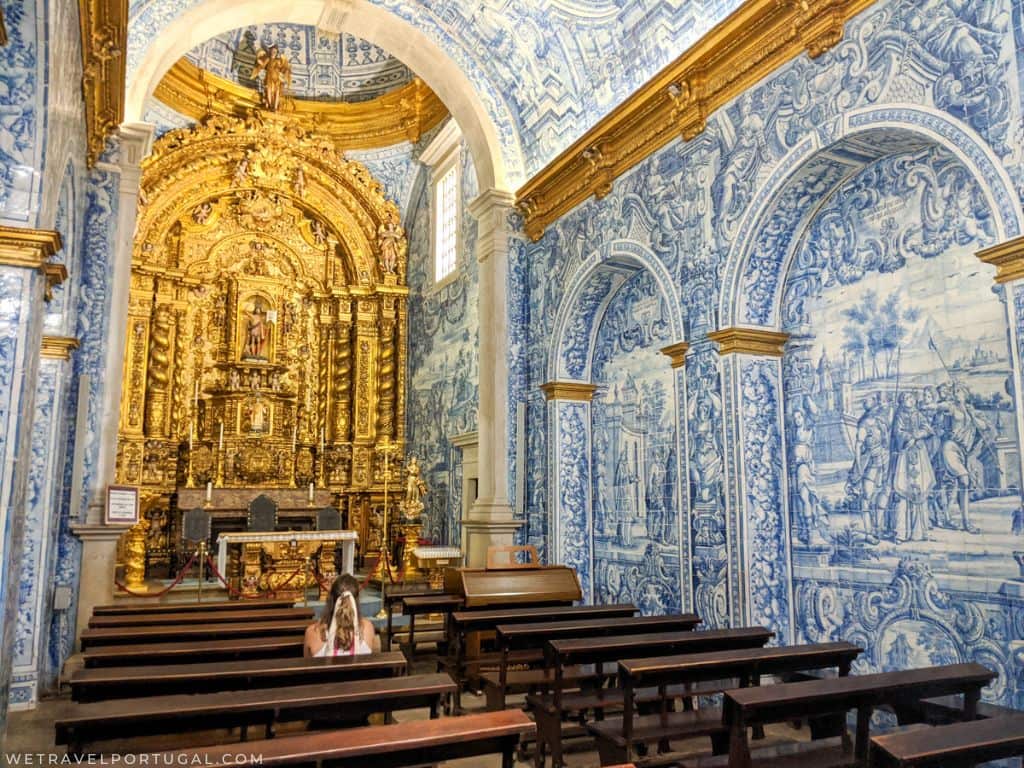
Discover: The Church of São Lourenço – Almancil
Igreja da Misericórdia – Tavira
Carrying on with our religious theme, next on my list is Tavira. Tavira is a picturesque riverside town, but it’s also a treasure trove of azulejos. Wander through its cute streets, and you’ll find buildings covered with typical tiles.
For somewhere truly special, you’ll need to visit Igreja da Misericórdia. It was built in in the mid-16th century and is one of the finest examples of Renaissance architecture in the Algarve. Although from the outside it does look rather plain, once you head inside you are in for a surprise. The walls are covered in Azulejo tiles depicting several bible scenes from the life of Christ. These stunning tiles are believed to have been added in the 1760s.
Entrance to the church costs €2, and for an additional €1 you can also head up its bell tower for some great views of Tavira and the river.
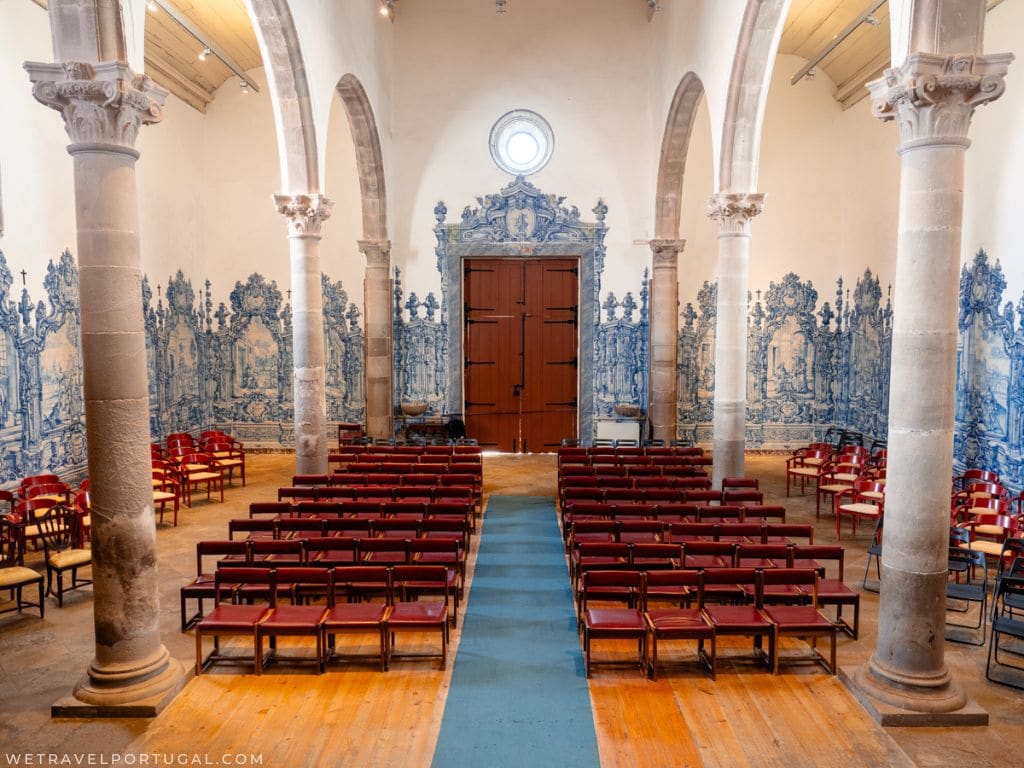
Loulé – Historic Centre
While Loulé is best known for its lively farmers market and local handicrafts, it’s also a wonderful place to admire traditional azulejos. In the town is the unique Ermida de Nossa Senhora da Conceição, a tiny church that is covered on all sides by Azulejo panels. It’s one of the smallest chapels in the Algarve and a great place to admire historic azulejos.
In the historic old town, is Igreja Matriz de São Clemente. The Church of São Clemente is the oldest church in Loulé and dates from the 13th century reconquest period. It still has the original Islamic bell tower that was converted to a Christian one when the church was built in the 13th century. Inside the church are several chapels that showcase early azulejo panels reportedly from the 17th century.
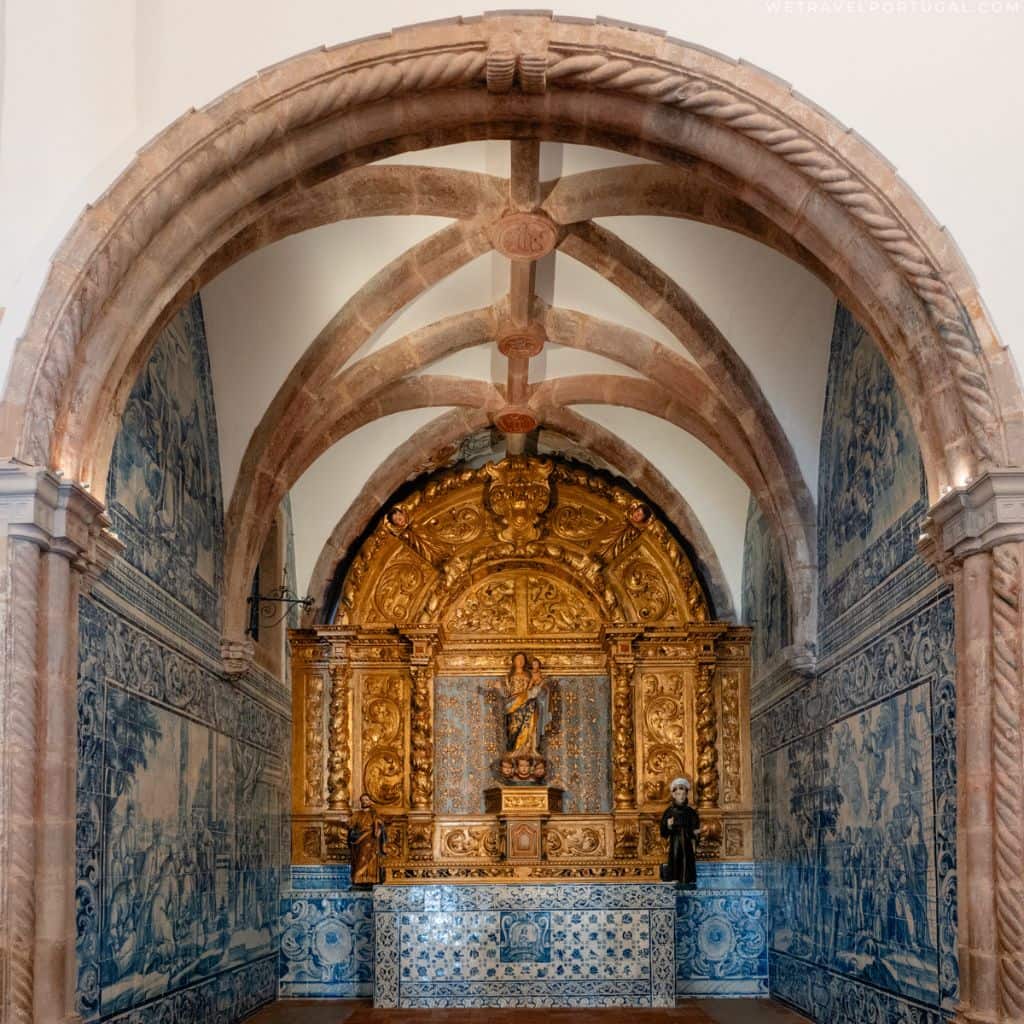
Palácio de Estoi (Estoi Palace)
Palácio de Estoi, located just outside Faro, is a must-visit for anyone interested in azulejos. This 19th-century Rococo-style palace is an opulent example of how tile work was incorporated into the grand architecture of the time.
The terraced gardens of the palace are particularly spectacular, offering views over the countryside and all the way to the ocean. The grand staircase is the focal point. Although the main stair case is the classic blue and white. In other areas of the palace and gardens you’ll find the much rarer tiles in greens, yellows, and reds. Not all of the tiles depict biblical themes either, you’ll find natural scenes and mythology, instead of the more typical catholic themes.
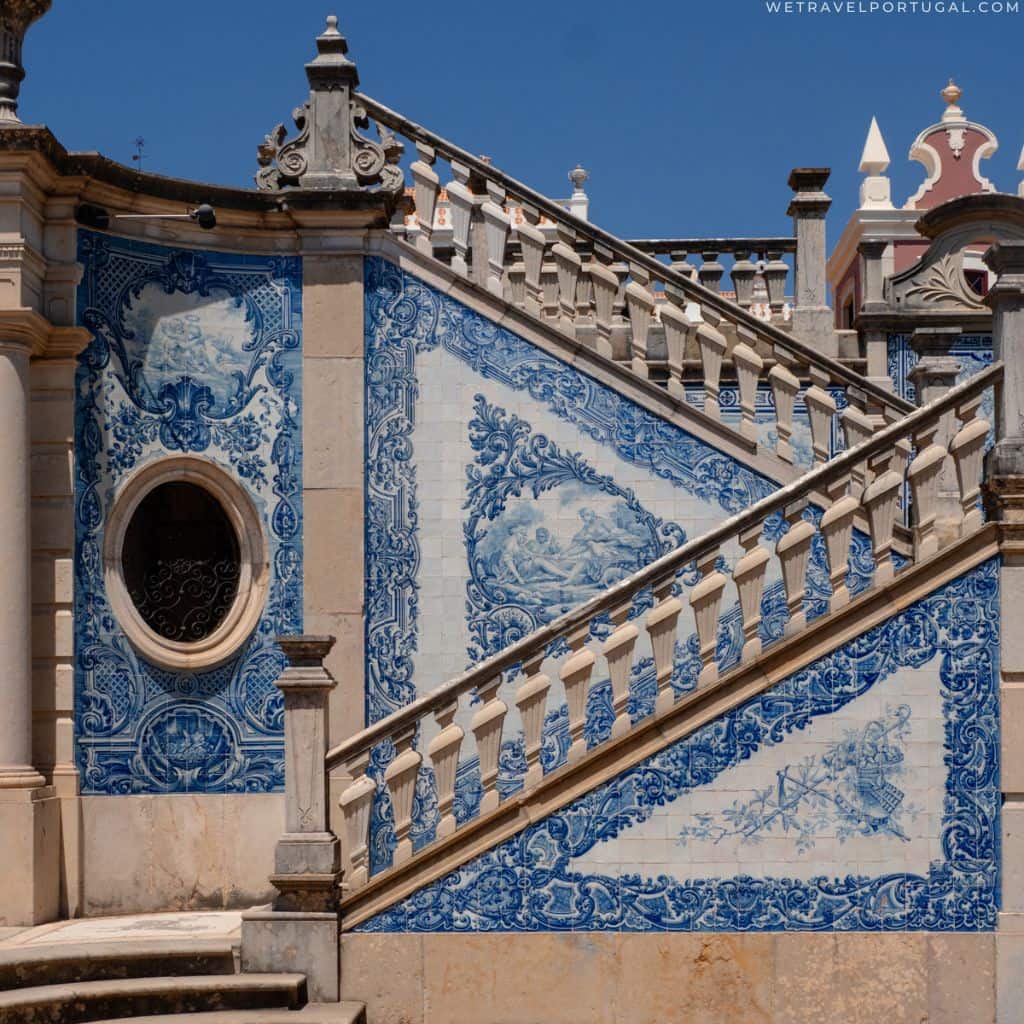
Discover: Estoi Palace – A Magnificent Algarve Palace You Can’t Miss
Lagos – Tiled Buildings and Architecture
In the mid-19th century, tiling the entire façade of a building became popular. Portugal’s azulejo factories began experimenting with mass production and tiles became much cheaper. Originally, the practice of tiling the outside of a home began in Lisbon’s Santos district – not as decoration but as protective barrier against humidity. The practice spread across Portugal and soon made its way to the towns of the Algarve.
You’ll find beautiful examples of tiled houses all over the Algarve, but several of my favourites are in Lagos and Ferragudo.
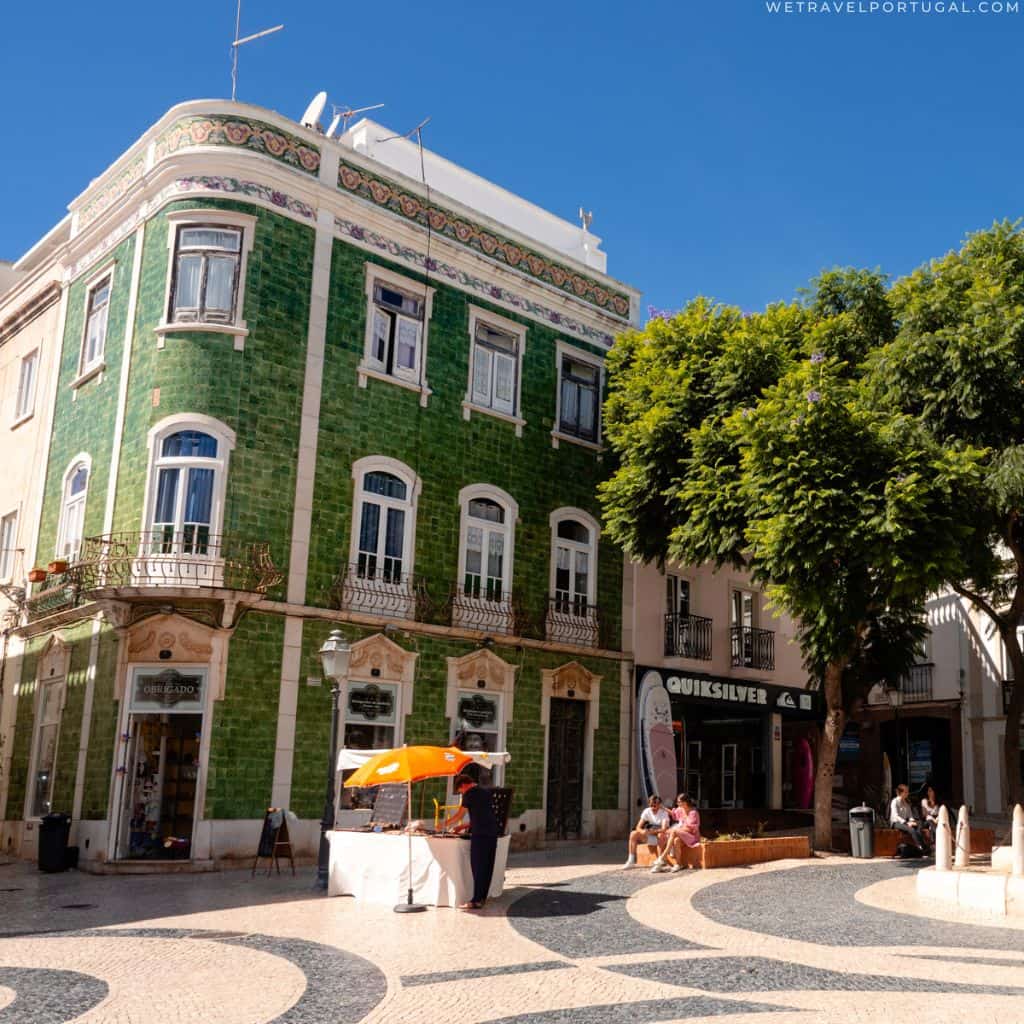
São Brás de Alportel – Modern Azulejo Panels
One of my favourite things about Azulejo’s is how the art style has survived and evolved through the centuries. There’s no better example than this of the vintage advertising panels you can find across the Algarve. My absolute favourite is ‘Algarve e Schweppes’, an advertisement that found its way to the outside of many bars and restaurants throughout the 1950s and 1960s,
The bright bold colours and simple message – Algarve and Schweppes – has inspired generations of homages, graffiti and reproductions. The best places to find original versions are in São Brás de Alportel, and Loulé. There’s a few more hidden around, like in Olhão and even Faro.
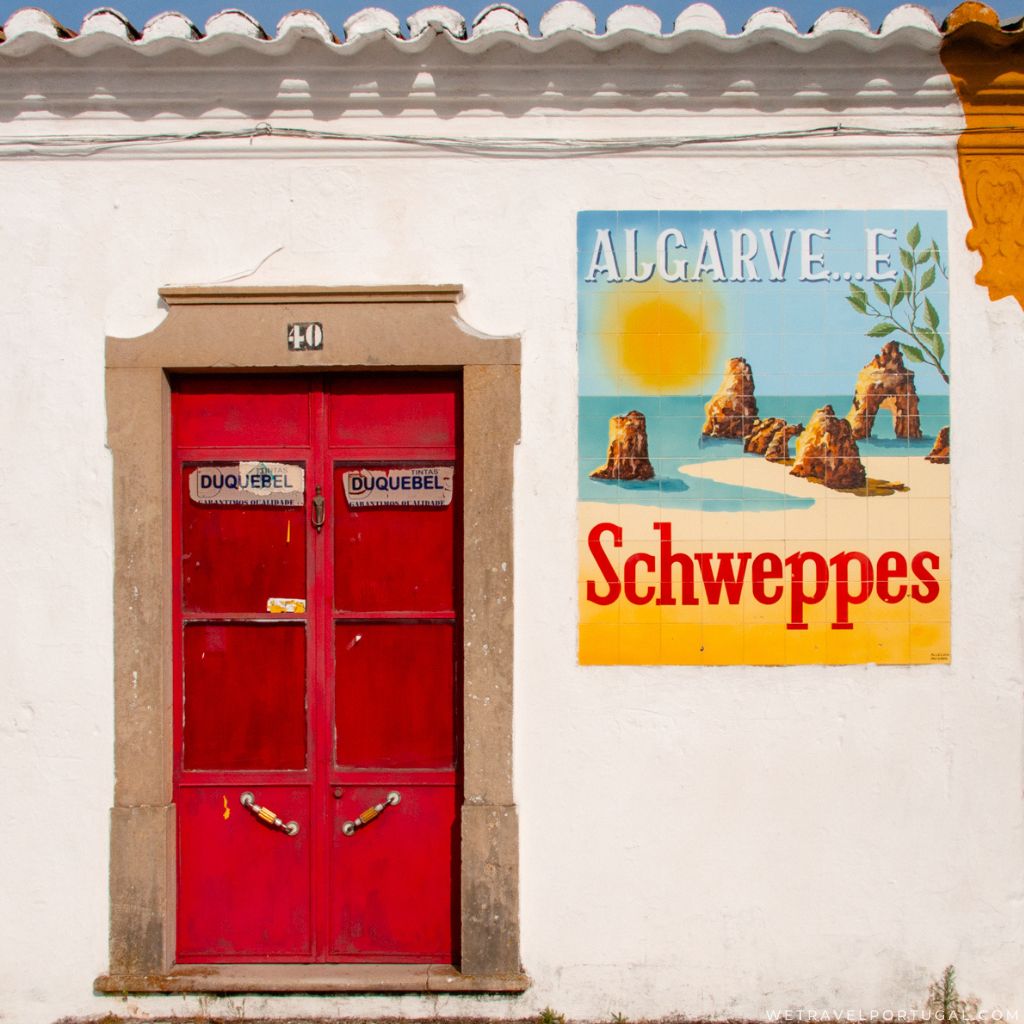
Don’t Buy Vintage Tiles
With such an array of beautiful tiles, you might be tempted to buy antique or vintage tiles to take home with you. It is really important you don’t.
Many of these tiles are stolen from historic buildings from around Portugal. Despite the claims that they may have been recycled or reclaimed, you really should not support the untraceable and unaccountable business of selling historic azulejo tiles. If you want a souvenir, purchase new instead.
